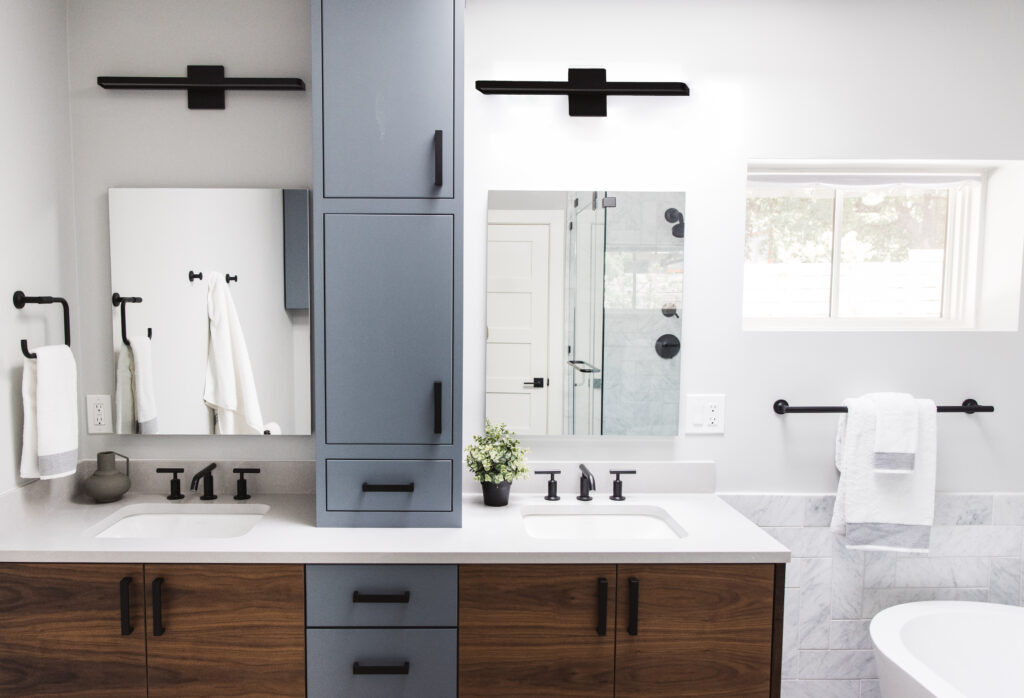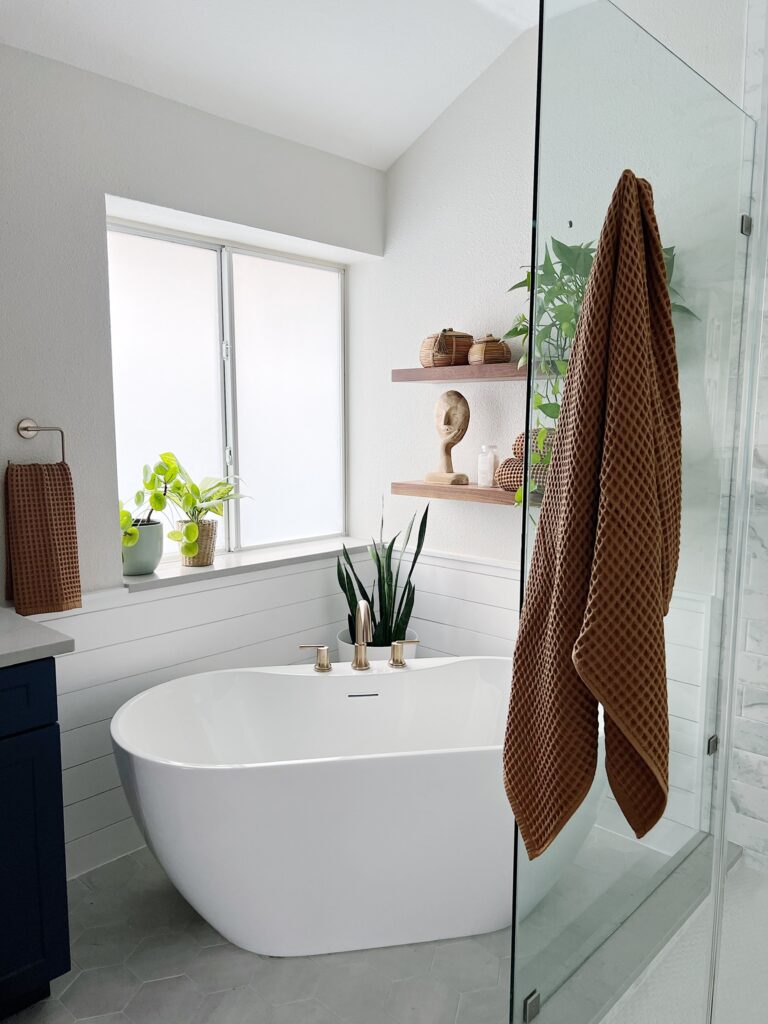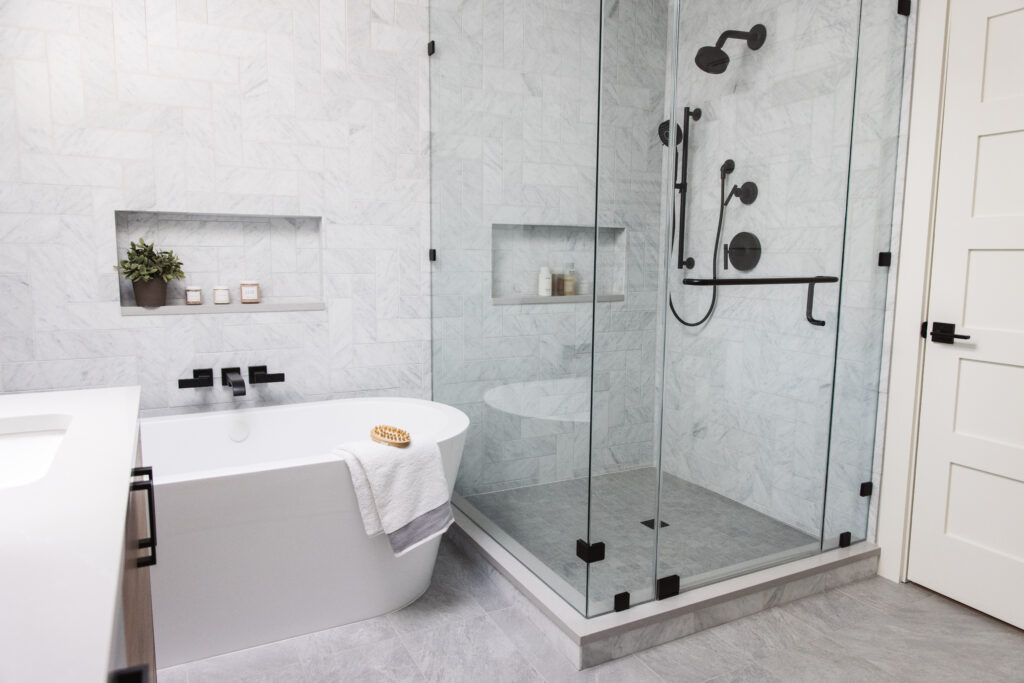Step-by-Step Guide to Bathroom Renovation
Bathroom Renovation can be a great way to update your home and increase its value. However, it can also be a complex and time-consuming process. Here’s a guide to help you plan and execute a successful bathroom renovation:

1. Set a Budget
The first step in any bathroom renovation is to set a budget. This will help you determine what you can and cannot afford to do. Consider the cost of materials, labor, and any unexpected expenses. It’s a good idea to set aside some extra funds for unexpected expenses that may arise during the renovation process. When setting your budget, also consider the potential return on investment (ROI) for the renovation, as this can impact your resale value down the line.
2. Plan Your Design
The next step is to plan your design. Decide on a design that suits your taste and meets your practical needs. Consider the size of the space, the layout, and the fixtures you want to include. Browse through magazines, websites, and design books for inspiration. You can also work with a designer to help you create a functional and aesthetically pleasing design. Make sure your design is practical and works with your daily routine.
3. Demolition
Once you have your plan in place, it’s time to start demolition. Clear out the existing bathroom fixtures, tiles, and cabinets to make way for the new fixtures. Make sure to turn off the water supply and electricity before starting the demolition process. Wear protective gear such as gloves and eye goggles, as there may be dust, debris and sharp objects.
4. Plumbing and Electrical Work
If you’re moving fixtures or adding new ones, you’ll need to hire a licensed plumber and electrician to make any necessary adjustments to the plumbing and electrical systems. This step is crucial as proper installation ensures the safe and proper functioning of your bathroom for years to come.
5. Flooring and Wall Tiles
With the necessary plumbing and electrical work done, you can now move on to installing new flooring and wall tiles. Choose a material that is durable and easy to clean, such as ceramic or porcelain tiles. If you’re tiling the walls, it’s a good idea to use a waterproof backing board to prevent moisture damage. Be careful when installing tiles as it is important to have straight lines and good symmetry.
6. Install Fixtures
Next, install new fixtures such as the bathtub, shower, toilet, and sink. Make sure they are properly secured and functioning correctly. Be sure to check the measurements of your fixtures and ensure they fit properly in the designated space. Make sure to double check the height and spacing of the fixtures to avoid potential issues with functionality.
7. Paint and Finishing Touches
With the fixtures in place, you can now move on to painting the walls and ceiling with waterproof paint. Install any additional accessories, such as towel racks, toilet paper holders, and shelves. Make sure everything is properly installed and secure. Be sure to select durable and easy-to-clean accessories that match the style and color scheme of your bathroom.
8. Final Inspection
Before using your new bathroom, conduct a final inspection to ensure everything is in good working order. Check the plumbing and electrical systems, fixtures, and any finishing touches. You may want to test the shower and other water fixtures to ensure proper water pressure and temperature. Be sure to keep the contact information of your contractors handy in case you have any issues.

Add the Finishing Touches to Your Newly-Remodeled Bathroom
Decorative Accents: Add some decorative accents such as artwork, candles, or a vase of flowers to your bathroom. These touches can add a personal and warm touch to the space.
Matching Accessories: Consider matching accessories such as soap dispensers, toothbrush holders, and towel bars. This can give your bathroom a cohesive look and feel.
Luxurious Towels: Invest in some high-quality, luxurious towels that complement the color scheme of your bathroom. They can add a touch of elegance and comfort to your daily routine.
Storage Solutions: Make sure to have ample storage space for your toiletries and bathroom essentials. Consider installing a medicine cabinet or additional shelving.
Bathroom Mats: A soft and plush bathroom mat can add both comfort and style to your bathroom. Consider choosing a mat that complements your bathroom’s color scheme and decor.
Lighting: Lighting can make a big difference in the ambiance of your bathroom. Consider adding dimmer switches or soft lighting to create a relaxing atmosphere.

Precautions after renovating a bathroom
There are several precautions you should take afterward to ensure that the space is safe, clean, and ready for use. The first step is to ventilate the room by opening windows and using fans to remove any dust and fumes from the renovation process. Next, you should clean thoroughly, including all surfaces, floors, walls, and fixtures. Be sure to use appropriate cleaning solutions and tools to avoid damaging any surfaces. It’s also essential to check for leaks in the plumbing or fixtures and to check the electrical safety if any electrical work was done.
Additionally, if new tiles or grout were installed, you should allow for proper curing time before using the shower or tub. Finally, take the opportunity to declutter and organize your bathroom after the renovation to maintain a clean and functional space. By following these precautions, you can ensure that your newly renovated bathroom is safe, clean, and ready for use.
In conclusion, a bathroom renovation can be a complex project but following these steps can help ensure a successful outcome. Planning ahead, setting a budget, working with experienced contractors, and selecting durable and stylish fixtures and accessories can help you create a bathroom that meets your practical and aesthetic needs. For more bathroom remodeling ideas and quality bathroom remodeling services, visit housemilldesign.com now!
Related Articles:
Top 7 Neutral Paint Colors for 2023
How to Make Your Home Look More Luxurious on a Budget
Best Kitchen Remodeling Ideas andTrends
The Journal
Leave a Reply
Library
OUR INTERIOR DESIGN WORK
INTERIOR DESIGN ADVICE
WORK WITH US
FREE INTERIOR DESIGN GUIDE
Site by WHITNEY RUNYON
[…] While each style has its own unique characteristics, many American house styles share a common emphasis on craftsmanship, quality materials, and attention to detail. Whether you prefer the classic, timeless design of a Colonial home or the sleek, modern aesthetic of a Contemporary home, there is an American house style to suit every taste and preference.More Articles:Step-by-Step Guide to Bathroom Renovation […]
[…] Get regular updates about home remodeling and designing at housemilldesign.com.Related Articles:Step-by-Step Guide to Bathroom RenovationNew 2023 Interior Design Trends to Decorate Your Living […]